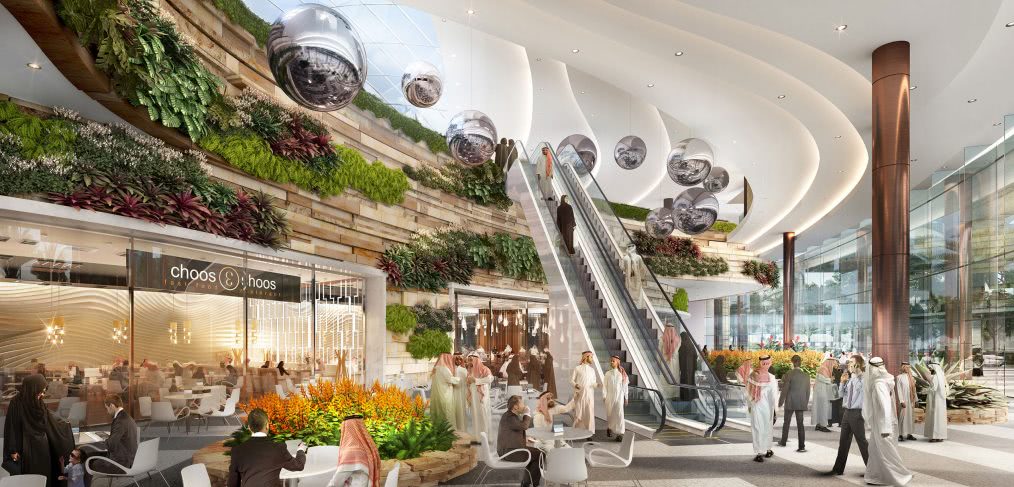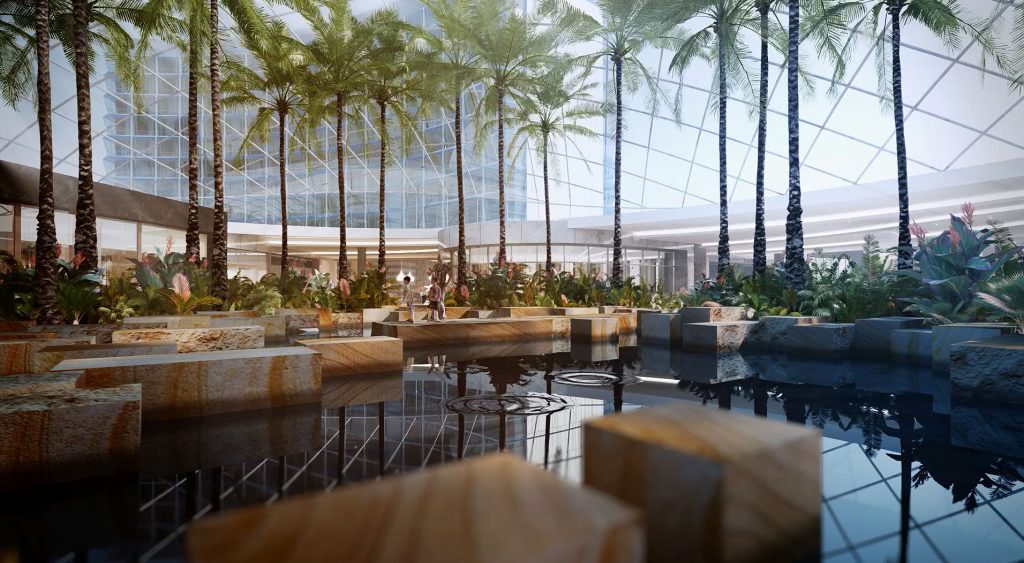
Seeing Green: Biophilia and Retail are a Natural Fit
CRTKL’s Brendan O’Grady delves into the use of green spaces in retail interiors.
Biophilia is far from a new concept, but the realization and application of its foundational tenet—that interior spaces can promote health, productivity and well-being by bringing the outdoors inside—is still being explored. Efforts to inject a little green into the built environment take many shapes and forms, whether those be in residential, hospitality or office spaces.
But what about retail? Shopping is a highly emotional experience, and the look and feel of a store has a tangible impact on shoppers. The clearest way to illustrate biophilic design’s application in the retail environment is through a specific case study; CallisonRTKL is currently working on an expansion for 360 Mall in Kuwait, a shopping center we originally designed in 2005. In the Middle East retail market—where developers are constantly trying to one-up one another via over-the-top extravagance and unlimited budgets—finding a competitive edge is easier said than done.
Room to grow
360 Mall in Kuwait is located at the intersection of Sixth Ring Road and King Faisal Road. The site provides high visibility and easy vehicular access from the highway, but it is limited in opportunity for growth and expansion.
Two years ago, Tamdeen Group, the mall’s developer, was given the opportunity to revive the stalled Sheikh Jaber Al Abdullah Al Jaber Al Sabah International Tennis Complex, which stands on a site adjacent to the shopping center. This opened the door to 20,000 SM of new retail—an exciting prospect, but one that still pales in comparison to the 100,000-SM expansion underway for 360 Mall’s closest competitor.
Without the capability to pursue a “bigger is better” strategy, the design team needed to get creative in order to make 360 Mall a stand-out destination and drive increased sales for its retail tenants.
Natural comfort
 Our design team’s strategy employs water features, trees, semi-open spaces and multiple view corridors to create an environment that can deliver the kind of psychologically soothing and calming effects of nature that have been proven to draw shoppers into stores, lengthen dwell time and boost sales. These key elements also resonate within the local context; in Islamic culture, flowing water, shade and exuberant foliage are symbols used to convey ideas of both spiritual and physical refreshment.
Our design team’s strategy employs water features, trees, semi-open spaces and multiple view corridors to create an environment that can deliver the kind of psychologically soothing and calming effects of nature that have been proven to draw shoppers into stores, lengthen dwell time and boost sales. These key elements also resonate within the local context; in Islamic culture, flowing water, shade and exuberant foliage are symbols used to convey ideas of both spiritual and physical refreshment.
Data from The Economics of Biophilia bear out the multitude of benefits that biophilic design can provide in the retail space; for instance, shoppers’ perception of the value and quality of goods increases proportionately to the level of greenery and vegetation within a space. As such, they are more likely to accept higher prices. And don’t forget—people like natural light as much as plants do. Stores with a high level of daylighting can realize significant profit margin boosts of 15-20%.
Consider that the retail market in the six Middle East countries that make up the Gulf Cooperation Council is forecasted to reach $270.3 billion by the end of the year; that’s a huge market to tap into and a great opportunity to increase quality of life while doing so. According to modern scientific research, indoor environments may be as much as 10 times more polluted than the outdoor environment. That said, nature isn’t just a profit booster—it’s a strategy for healthier living. Shoppers will spend more money, but they’ll also stay healthier while doing it.
The living wall
One of our favorite ways to integrate nature indoors is through “the living wall”—a vertical garden that serves as a natural air purifier, removing VOCs and other harmful toxins while exhaling oxygen into the space as a byproduct of photosynthesis. The vertical configuration allows for a higher volume of plantings within a smaller space. 360 Mall’s living wall is composed of over 101 different species of plants, with each square meter of the wall hosting 33 individual plants.
The living wall also helps to keep things cool through a process known as evapotranspiration. Studies show that green walls can reduce heat gain by up to 10°C, resulting in significant energy savings, reduced cooling costs and decreased electricity costs (up to 20%). Similarly, the living wall provides an extra layer of insulation, which helps to retain heat in colder temperatures.
Plants not only help to keep things cool, but also quiet. One of the lesser-known benefits of living green walls is that they can reduce noise levels in buildings, similar to the way in which plants have been used worldwide to reduce noise along roads and highways. Vegetation naturally blocks high frequency sounds while the wall’s supporting structure and mass help diminish low frequency sounds; together, each element reflects, refracts and absorbs acoustic energy.
Biophilic design helps ensure that retailers, developers and operators will see more green, literally and figuratively, while keeping shoppers happier and healthier. Biophilia in the shopping center, in that sense, is a natural fit.
